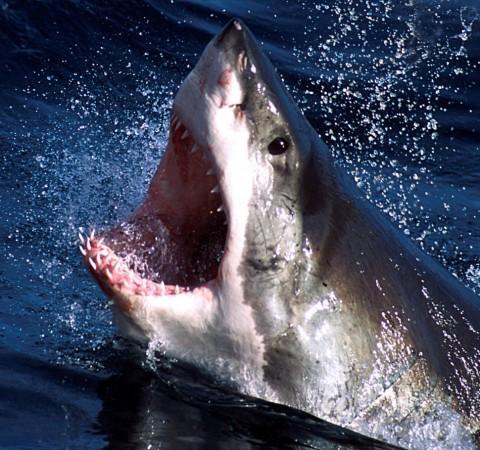
World's largest predatory fish, the great white sharks, have a large appetite than previously thought, reveals a new study.
Great white sharks, also known as the white sharks or the white pointer (Carcharodon carcharias), can grow to an average height of 4.6 metres (15 ft).They can weigh more than 2,000 kgs and can be found in all major oceans. The International Union for Conservation of Nature (IUCN) have categorized the species as "vulnerable," as a result of habitat degradation and overexploitation.
It is very difficult to study these marine predators. The energy requirements of the white sharks have been poorly documented and the prey intake rates are not much known. A new study has challenged the popular assumptions about the feeding behaviour of the white sharks.
The study by a team of international researchers has revealed that the energy need of the white sharks is much higher than previously thought.
"The energy requirements of large sharks in the wild are poorly documented and their prey intake rates are largely unknown," Dr Jayson Semmens, of the University of Tasmaniaâs Institute for Marine and Antarctic Studies (IMAS), said in a statement. "Research on how sharks interact with their ecosystems is needed because many shark species are highly vulnerable to overexploitation. "Our study uses metabolic rates derived from swimming speed estimates to suggest that feeding requirements of the white shark are much higher than previously proposed," he said.
A previous study had suggested that a white shark could survive on a 30kg meal for around one and a half months. This led to assumptions that the sharks could live for long periods without having food. But the new study reveals that the a white shark could survive on such a meal for just 12 to 15 days and not for one and a half months as previously assumed.
Researchers point out that it is significant to determine the energy requirements of the marine mammals in their natural habitats so as to understand the ecosystem ecology, functioning and the behaviour of the species.
The findings of the study are published in the journal Scientific Reports.






!['He is done with the team now' : Angry Virat Kohli slams the bat, kicks the ground, yells at RCB team as SRH smashes runs [reactions]](https://data1.ibtimes.co.in/en/full/796956/he-done-team-now-angry-virat-kohli-slams-bat-kicks-ground-yells-rcb-team-srh-smashes.jpg?w=220&h=138)







